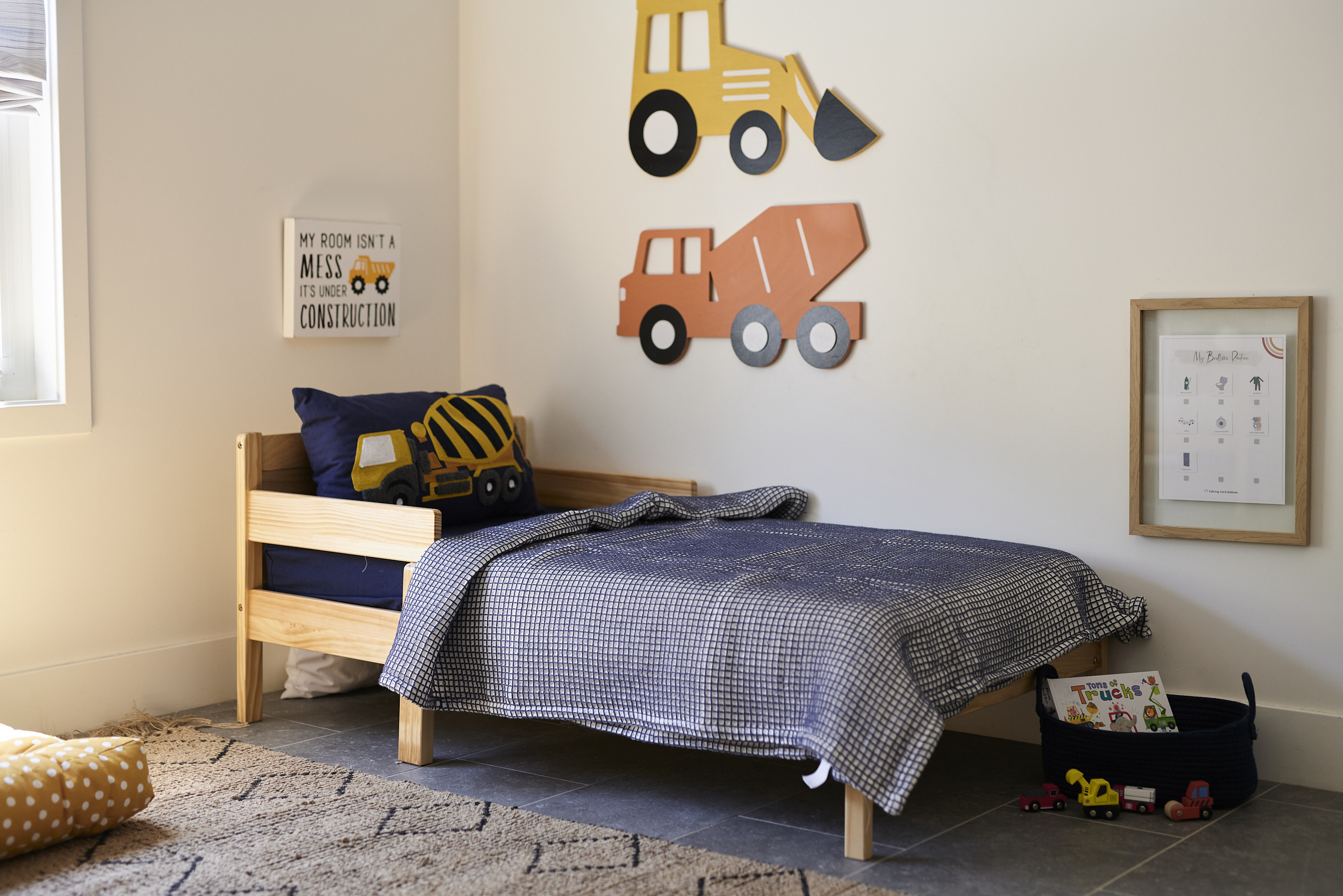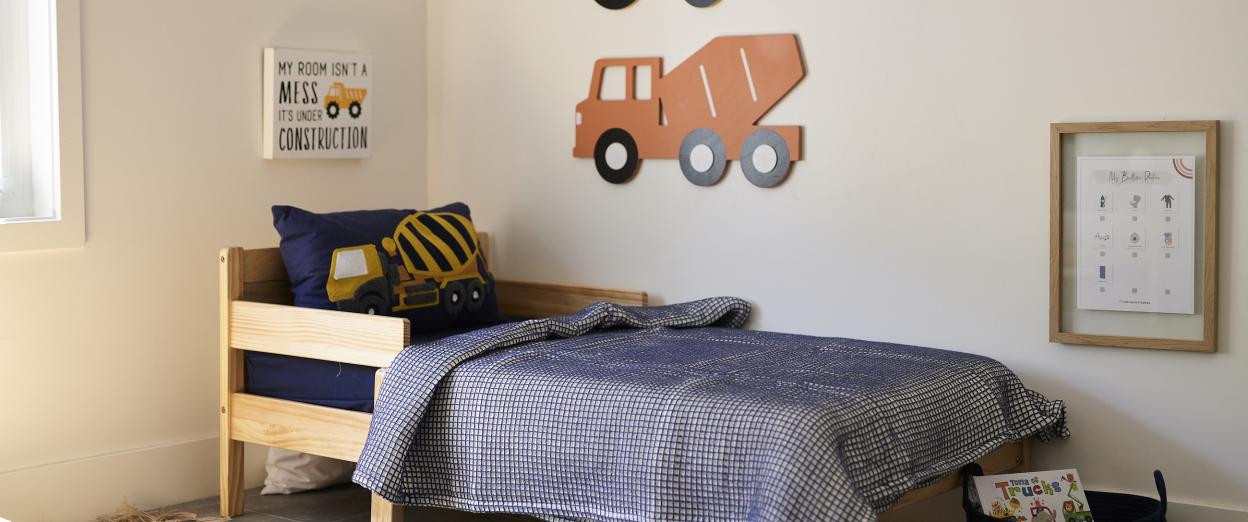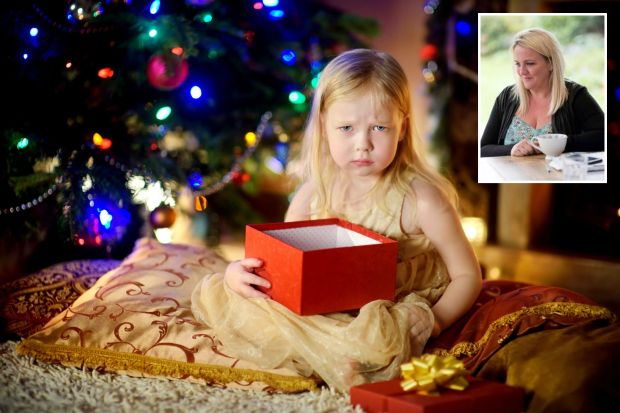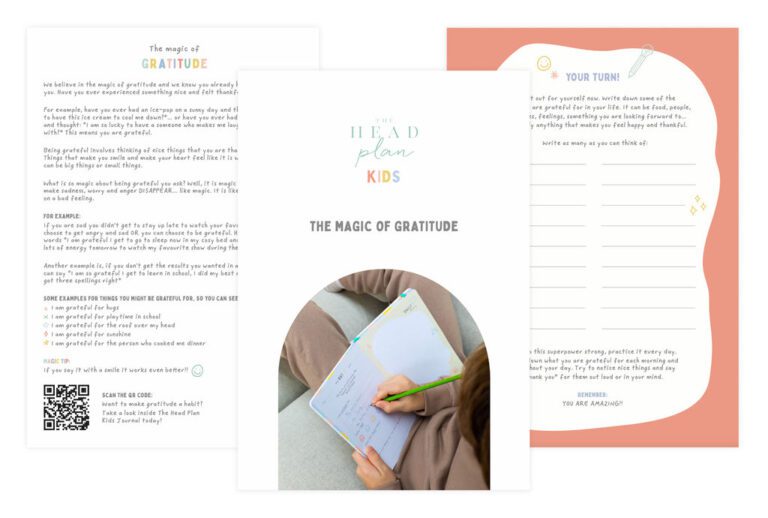How to Transition Baby to Own Room: The Ultimate Guide
To transition a baby to their own room, start by letting them practice with daytime naps in their own bedroom before attempting overnight sleep. Gradually move the crib or bassinet further away from your bed over a few weeks to increase comfort.
Determining The Right Time
Transitioning your baby to their own room is an important milestone in their development. It can help promote independence, better sleep patterns, and create a dedicated space for them to grow. However, determining the right time to make this transition can be a daunting task for parents. In this section, we will explore the ideal age to move the baby to their own room, the advantages of transitioning, signs that indicate your baby is ready, factors to consider, and when not to transition.
When Is The Ideal Age To Move The Baby To Their Own Room?
The ideal age to move your baby to their own room varies for each child, but most experts recommend waiting until they are at least six months old. By this time, babies have usually established a regular sleep schedule and are more likely to sleep through the night. Waiting until they reach this age helps ensure that their physiological needs, such as feeding and diaper changing, have become more predictable.
The Advantages Of Transitioning The Baby To Their Own Room
Moving your baby to their own room offers several advantages for both you and your child:
- Better sleep: Babies tend to sleep more peacefully in a quiet, separate room.
- Increased independence: Having their own space helps foster independence and a sense of ownership.
- Establishing routines: Creating a consistent bedtime routine becomes easier when your baby has their own room.
- Bonding with siblings: If you have older children, transitioning the baby to their own room can help promote bonding between siblings.
Signs That Indicate The Baby Is Ready For Their Own Room
While there is no exact checklist for when your baby is ready for their own room, there are a few signs to look out for:
- Longer stretches of sleep: If your baby is consistently sleeping for longer periods, it may be a sign that they are ready for more independent sleep.
- Comfort with separation: If your baby shows signs of being comfortable and content when you are not in their immediate vicinity, it may indicate that they are ready to sleep in their own room.
- Improved self-soothing: Babies who can self-soothe and fall back asleep without needing constant attention or intervention are often more ready for their own room.
Factors To Consider Before Making The Move
Before making the transition, consider the following factors:
- Sleeping arrangements: Will your baby be transitioning from a bassinet, co-sleeping, or sharing a room with you? Your current sleeping arrangement can influence the timing and ease of the transition.
- Physical readiness: Ensure that your baby has achieved the necessary physical milestones, such as rolling over and sitting up independently, to sleep safely in their own room.
- Room preparation: Make sure the room is childproofed, free from hazards, and adequately equipped with a crib or age-appropriate sleeping surface.
- Parental readiness: It’s essential to assess your own emotions and readiness for this transition. Remember that babies can pick up on parental anxieties, so being confident and calm will help ease the process.
When Not To Transition The Baby To Their Own Room
While transitioning your baby to their own room is an exciting step, there are a few situations when it might be best to wait:
- Illness: If your baby is currently ill or going through a major developmental leap, it is wise to delay the transition until they are feeling better and more settled.
- Travel: If you have upcoming travel plans or will be staying in a different location, it is best to wait until you return home to keep the transition consistent.
- Family changes: Big changes, such as moving to a new house or welcoming a new family member, can disrupt your baby’s sense of security. It is advisable to wait until these changes have settled down before transitioning.
Creating A Smooth Transition
Transitioning your baby to their own room can be a smooth process. Start by gradually increasing the space between you and your child, establish a consistent bedtime routine, and familiarize them with their new space. Remember to be patient and stay calm throughout the transition.
Gradual Transition Strategies For A Successful Move
Moving your baby to their own room can be a big adjustment for both you and your little one. To ensure a smooth transition, it’s helpful to take it step by step. Here are some gradual transition strategies:
- Start with daytime naps: Before making the switch overnight, let your baby practice napping in their own room. This helps them get familiar with the new environment in a less overwhelming way.
- Gradually increase separation: If your baby is used to sleeping right next to you, gradually increase the distance between you and your little one. Start by moving their crib to the far side of your room, then gradually move it closer to their own room over time.
- Create a soothing sleep environment: Make your baby’s new room cozy and inviting. Use soft, calming colors for the walls, and invest in blackout curtains to create a dark and quiet sleep environment.
- Stay consistent with routines: Maintain your baby’s familiar bedtime routine to provide comfort and stability during the transition. This can include activities like a warm bath, reading a bedtime story, or singing a lullaby.
Introducing A Comforter Or Special Item For Comfort
During the transition, it can be beneficial to introduce a comforter or special item that your baby associates with comfort and security. This can be a soft blanket, a stuffed animal, or a favorite toy. Having a familiar object nearby can provide a sense of familiarity and help your baby feel more at ease in their new room.
Tips For Different Types Of Children
Every child is unique, and their reactions to the transition may vary. Here are some tips for different types of children:
| Good sleepers: | Good sleepers may adapt quickly to the new environment. Follow the gradual transition strategies mentioned earlier and provide plenty of love and reassurance. |
| Clingy babies: | Clingy babies may need extra support during the transition. Offer extra comfort and reassurance, establish a consistent bedtime routine, and gradually increase separation over time. |
Establishing A Consistent Bedtime Routine
A consistent bedtime routine is crucial for helping your baby adjust to their own room. Here are some tips for establishing a routine:
- Set a consistent bedtime: Choose a specific time for your baby’s bedtime and stick to it every night. Consistency helps signal to your little one that it’s time to wind down and prepare for sleep.
- Incorporate calming activities: Include relaxing activities in your baby’s bedtime routine, such as a warm bath, gentle massage, or quiet playtime.
- Dim the lights: Lower the lights in your baby’s room as bedtime approaches to create a calm and soothing atmosphere.
- Read or sing together: Spend some quality time reading a bedtime story or singing a lullaby with your baby. This helps create a sense of security and comfort before sleep.
Make Sure The Environment Is Consistent And Familiar
Creating a consistent and familiar environment in your baby’s new room is essential for a smooth transition. Here are some tips to achieve this:
- Keep familiar objects: Bring some familiar objects from your baby’s previous sleep space, such as their crib sheets or a favorite mobile, to their new room. These items can provide a comforting sense of familiarity.
- Stick to familiar routines: Try to maintain other familiar routines, such as feeding or playtime, in their new room. This helps your baby associate the new space with positive experiences and memories.
- Use consistent sleep aids: If your baby relies on sleep aids, such as white noise machines or pacifiers, continue using them in their new room. These sleep cues can help your little one feel secure and comfortable.
Preparing The Room
Moving your baby to their own room can be a smooth transition with these tips. Start by gradually increasing the space between you and your child, then introduce a comforter and establish a consistent bedtime routine.
Choosing The Right Bedding For The Baby’s Safety And Comfort.
When it comes to choosing bedding for your baby’s room, safety and comfort are of utmost importance. It is crucial to select bedding that adheres to safety standards and is free from any potential choking hazards. Opt for fitted crib sheets that fit snugly around the mattress to prevent any entanglement risks. Additionally, choose bedding made from breathable materials like cotton to promote proper airflow and regulate your baby’s body temperature.
Setting Up The Nursery For Optimal Sleep Conditions.
Creating a sleep-friendly environment is essential to help your baby sleep better in their own room. Start by considering the room’s lighting. Install blackout curtains or use sleep shades to block out any external light sources that may disturb your baby’s sleep. Ensure the temperature of the room is comfortable, aiming for around 68-72 degrees Fahrenheit. A white noise machine or a fan can also help drown out any background noises and create a soothing ambiance for your little one.
Creating A Soothing And Calming Environment.
Your baby’s room should be a sanctuary of tranquility and relaxation. Choose soft, pastel-colored walls or opt for soothing wallpaper that promotes a sense of calmness. Consider adding a cozy rocking chair or glider where you can comfortably nurse or soothe your baby to sleep. Hang blackout curtains or blinds to create a dark and serene atmosphere, ideal for promoting restful sleep.
Safety Precautions To Consider In The Baby’s Room.
Ensuring your baby’s safety is paramount when setting up their room. Take the following precautions:
- Secure any furniture or bookshelves to the wall to prevent tipping hazards.
- Keep cords from blinds or curtains out of reach to avoid strangulation risks.
- Install babyproof outlet covers to protect your little one from electrical hazards.
- Remove any small objects or toys that could pose a choking hazard.
- Place window guards or locks to prevent accidental falls.
Ensuring A Healthy Sleep Environment For The Baby.
A healthy sleep environment is vital for your baby’s overall well-being. Keep the following tips in mind:
- Ensure proper ventilation in the room by opening windows or using a fan.
- Keep the room clean and free from allergens by regularly dusting and vacuuming.
- Avoid using strong fragrances or air fresheners that may irritate your baby’s respiratory system.
- Monitor the room’s humidity levels, aiming for around 40-60% to prevent dryness or excessive moisture.
- Wash bedding, including crib sheets and blankets, regularly to maintain cleanliness and hygiene.
By following these guidelines and preparing the room with your baby’s safety and comfort in mind, you can ensure a smooth transition to their own room and promote healthy sleep habits right from the start.

Credit: takingcarababies.com
Managing Challenges And Sleep Regression
Transitioning your baby to their own room can be a challenge, but with careful planning and a gradual approach, it can be a smooth process. Start by letting your baby practice with daytime naps in their own bedroom, gradually moving the crib or bassinet further away from your bed over a few weeks.
Dealing With Separation Anxiety During The Transition
Transitioning your baby to their own room can be an exciting but challenging time for both parents and the baby. One of the common challenges parents face is dealing with separation anxiety. Babies are used to the comfort and security of being close to their parents, so moving them to a new environment can trigger feelings of fear and uncertainty.
To address separation anxiety, it is important to gradually introduce the baby to their new room. Start by spending some playtime in the room during the day and slowly increase the amount of time spent there. This helps the baby develop positive associations with the room and feels more comfortable being in it.
Creating a consistent bedtime routine is another effective strategy for managing separation anxiety. Establishing a predictable routine can reassure the baby and provide a sense of security. Make sure to include soothing activities such as a warm bath, reading a book, or singing a lullaby, as these can help calm the baby before sleep.
Navigating Sleep Regression And Managing Disruptions
Sleep regression is a common occurrence during the transition to a baby’s own room. It refers to a period when a previously good sleeper starts experiencing difficulties falling asleep or staying asleep. This can be caused by various factors such as teething, developmental milestones, or changes in their environment.
To navigate sleep regression, it is crucial to stay consistent with the baby’s sleep schedule and routine. Stick to regular nap times and bedtime, as consistency helps the baby establish healthy sleep patterns. Additionally, provide a calm and soothing environment in the baby’s room, ensuring it is dark, quiet, and at a comfortable temperature.
If disruptions occur during the night, it is important to handle them appropriately. Try not to rush into the room at the first sign of fussiness. Give the baby some time to self-soothe and settle back to sleep. If the baby continues to cry, respond with gentle reassurance, such as patting their back or softly singing a lullaby, but avoid picking them up unless necessary.
Strategies For Soothing The Baby During The Nighttime
When soothing the baby during the nighttime, it is important to use techniques that promote a sense of security and relaxation. You can consider using a white noise machine or playing soft music to create a soothing environment. Additionally, using a dim night light can help ease any fears the baby may have in the dark.
Physical comfort is also essential for soothing the baby. Make sure the bedding is cozy and appropriate for the season. Use comfortable sleepwear that allows the baby to move freely. If the baby still needs assistance falling asleep, consider introducing a comfort object such as a stuffed animal or a blanket that they can associate with comfort and security.
Staying Calm And Reassured For A Successful Transition
During the transition to the baby’s own room, it is important for parents to remain calm and reassured. Babies can pick up on parental emotions, so being relaxed and confident will help create a positive atmosphere for the transition.
Remember that every baby is different, and the transition may take time. Stay patient and persistent, and avoid becoming frustrated or anxious if the process doesn’t go smoothly at first. Your calm and confident approach will ultimately reassure your baby and help them feel secure in their new room.
Encouraging Self-soothing And Independent Sleep
As your baby transitions to their own room, it is important to encourage self-soothing and independent sleep. This helps them develop essential sleep skills and promotes healthy sleep habits.
To encourage self-soothing, give your baby the opportunity to settle themselves to sleep without constant intervention. This means resisting the urge to rush in and pick them up at the first sign of fussiness. Allow them to learn how to self-soothe and fall asleep on their own.
Gradual withdrawal is another effective technique for promoting independent sleep. This involves gradually reducing your presence in the room over time. Start by sitting next to the crib and providing reassurance, then gradually move farther away until you can eventually leave the room while the baby is still awake.
By encouraging self-soothing and independent sleep, you are helping your baby develop essential skills for a restful night’s sleep and laying the foundation for healthy sleep habits in the future.
Maintaining Healthy Sleep Habits
When transitioning your baby to their own room, maintaining healthy sleep habits is essential. A consistent sleep schedule, establishing healthy sleep habits, promoting good sleep hygiene and a peaceful sleep environment, strategies for encouraging longer stretches of sleep, and troubleshooting common sleep issues are all key factors in ensuring a smooth transition and promoting healthy sleep for your baby.
Understanding The Importance Of A Consistent Sleep Schedule
A consistent sleep schedule plays a crucial role in helping your baby develop healthy sleep patterns. It is important to create a routine that incorporates regular nap times and a consistent bedtime. Consistency will help your baby’s internal clock synchronize and promote restful sleep throughout the day and night.
Establishing Healthy Sleep Habits For The Baby
Establishing healthy sleep habits from the beginning is vital for your baby’s overall sleep quality. This includes creating a calming bedtime routine, such as a bath or a story, that signals to your baby that it’s time to wind down and prepare for sleep. Consistency in these habits will promote relaxation and prepare your baby for a restful night’s sleep.
Promoting Good Sleep Hygiene And A Peaceful Sleep Environment
Creating a peaceful sleep environment is crucial for your baby’s sleep success. Ensure the room is dark, quiet, and at a comfortable temperature. Using blackout curtains or a white noise machine can help create a serene sleep environment. Additionally, promoting good sleep hygiene involves avoiding stimulating activities before bed, such as screen time or noisy play, which can interfere with your baby’s ability to fall asleep and stay asleep.
Strategies For Encouraging Longer Stretches Of Sleep
Encouraging longer stretches of sleep can help your baby feel more rested and promote healthy sleep patterns. Some strategies to try include dream feeding, gradually extending the time between nighttime feedings, and gently helping your baby learn to self-soothe. Remember, every baby is different, so it may take some trial and error to find the strategies that work best for your little one.
Tips For Troubleshooting Common Sleep Issues
While every baby is unique, there are common sleep issues that parents may encounter during the transition to their own room. Some tips for troubleshooting these issues include gradually weaning your baby off sleep associations, such as rocking or nursing to sleep, using a consistent bedtime routine, and offering comfort and reassurance if your baby wakes during the night. Consistency and patience are key in overcoming these common sleep challenges.
Frequently Asked Questions Of How To Transition Baby To Own Room
When Should I Transition My Baby To His Own Room?
Transitioning your baby to their own room can be done when they are more comfortable during daytime naps in their bedroom. Start by moving their crib or bassinet further away from your bed gradually over a few weeks. Practice with daytime naps first before attempting an overnight stretch.
At What Age Should A Baby Have Their Own Room?
Babies can have their own room when they are more comfortable with daytime naps in their room. Start with practicing daytime naps in their own bedroom and gradually move the crib or bassinet further away from your bed over a few weeks.
How Do I Transition My Co-sleeping Baby To His Own Room?
To transition your co-sleeping baby to their own room, gradually increase the space between you and your child. Bring their crib into your room temporarily and establish a consistent bedtime routine. Familiarize them with their new space by trying it for naptimes first.
Start with daytime naps in their own bedroom before attempting an overnight stretch.
When Can I Move My Baby To His Own Room Taking Cara Babies?
You can move your baby to their own room gradually by starting with daytime naps in their own bedroom. Once they are comfortable during the day, you can try an overnight stretch. Move the crib or bassinet further away from your bed over a few weeks.
Conclusion
Transitioning your baby to their own room can be a daunting task, but with the right approach, it can be a smooth process. Start by gradually introducing them to their new environment during daytime naps and then gradually moving their crib further away from your bed.
Establishing a consistent bedtime routine and familiarizing them with their space can also help. Remember, each child is different, so be patient and adapt the transition to their needs. With a little preparation and patience, you can successfully transition your baby to their own room.
Happy parenting!








